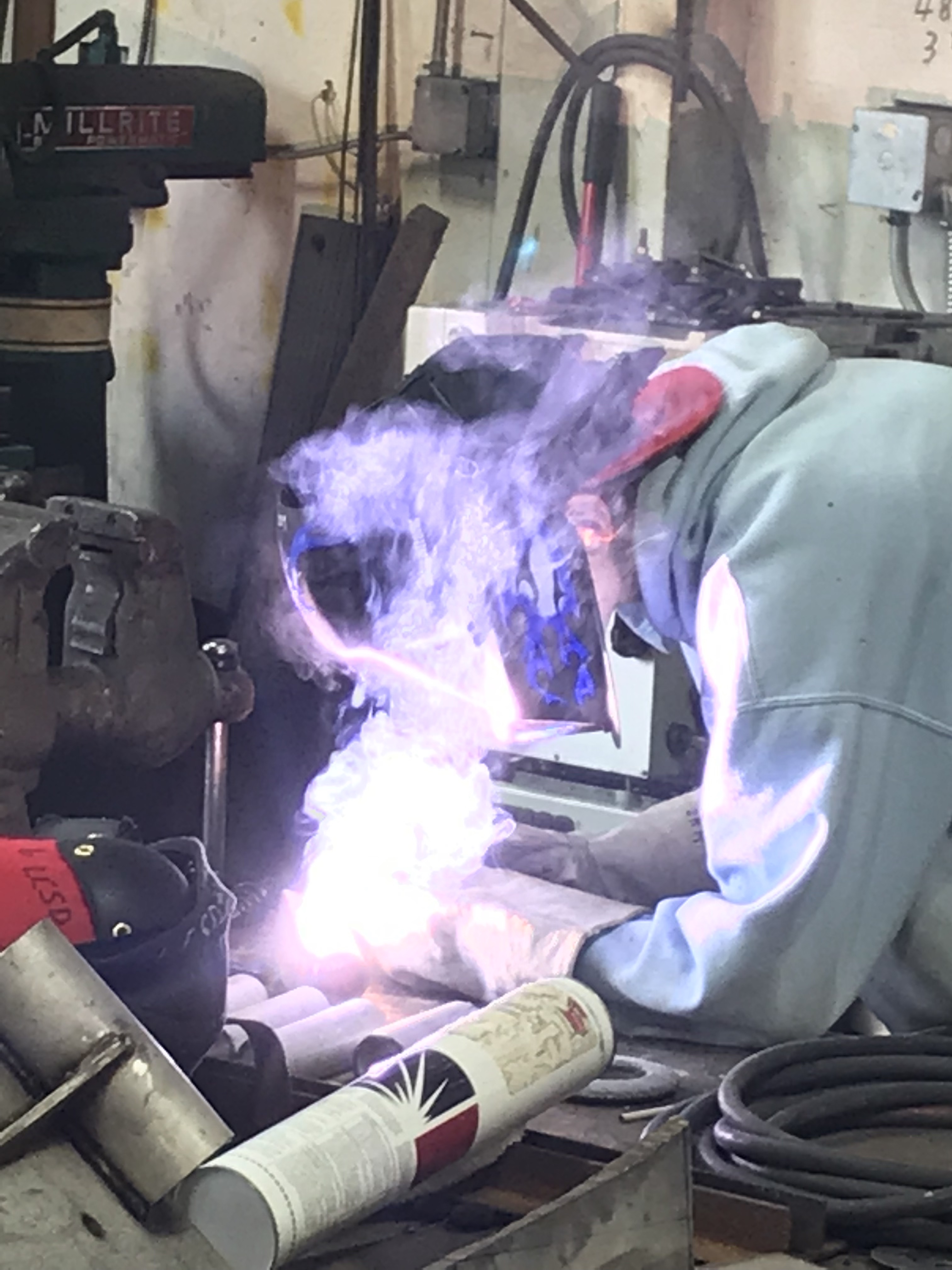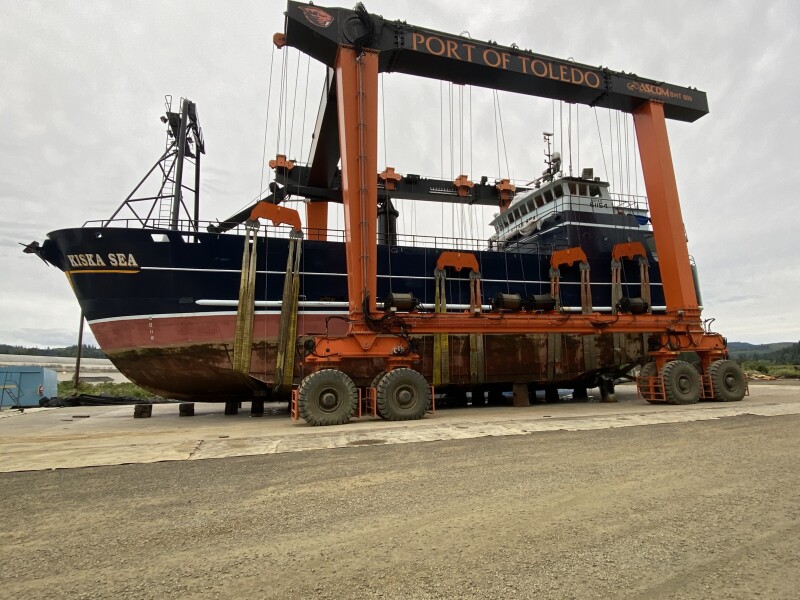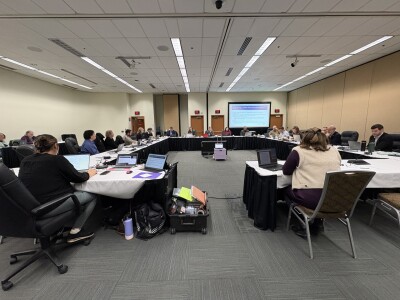Getting a new sewer hookup isn’t everyone’s thing, but for the port manager of the Port of Toledo, Debbie Scacco, it’s exciting. “We’re getting connected to the City of Toledo system at last,” she said.
"And as part of the project, we’re constructing six new concrete workpads for the shipyard with separate washwater and stormwater drainage systems. The hard-surfaced work pads are an improvement over the existing tarped work pads in our gravel yard," said Scacco. "Vessels may be washed and then blocked at the same workpad, instead of the current process of waterblasting at a designated washdown pad and then being moved to a tarped work pad."
The port has been implementing expansion plans since it purchased the yard in 2010. “When the yard’s private owner, Fred Wahl, shuttered operations in 2008, the Port of Toledo recognized a need to maintain haul-out facilities to service the Yaquina fleet,” said Scacco. “It had a 200-ton floating drydock at the time, along with an 85-ton mobile lift, and we initially ran it as a do-it-yourself yard.”
Shipyard manager Ben Victorine came to the yard in 2013, as the boatyard was shifting to a more service-oriented operation. “In order to provide consistent services and maintain control of environmentally impactful activities, we found we have to control hazardous materials and need to do all of the hot work, paint spraying, and sandblasting,” said Victorine. “We haul the boats, clean the bottom, and apply all bottom paint. We also do shaft work, repowering, and any type of welding, steel, stainless, and aluminum. Our aluminum welding machines are the newest available.”
In 2015, the Port of Toledo Shipyard expanded the yard and built new haulout piers, and in 2016, it replaced the drydock with a new 650-ton Ascom straddle lift. “The biggest boat we’ve had in here was an Alaska king crab boat, the Kiska Sea,” said Victorine, noting that many Alaska boats come to the yard in fall and again in the spring. “And we’re busy with a lot of the local boats before the Dungeness crab season in the winter, and boats getting ready for shrimp in April and whiting in May.”
While Victorine keeps the shipyard crew working, he also noted that approved contractors are welcome and needed. “We have access to all the marine trades here: electricians, hydraulics, RSW [refrigerated seawater systems] installers, and others,” said Victorine. “The vessel owners pay an hourly fee for contractors they bring in.
In 2022, the port finished construction of a work building large enough to accommodate any vessel that the shipyard can haul out. “Shipyard work can be completed in our building without being affected by weather delays," said Scacco.
In addition to supporting the area's existing marine trades professionals, the Port of Toledo Shipyard is actively promoting the training of new workers in the field. “The Oregon Coast Community College is a port tenant for its marine welding program,” said Scacco. “And while we didn’t do it this year, we have a high school intern program where students come in for a few hours a day, two days a week, and work alongside our crew.”

Scacco and Victorine noted that students undergo interviews, clock in as if they would at a regular job, and gain exposure to both the fun work and the drudge work. “They may be sweeping sand from sand blasting one day, and allowed to weld on another day,” said Victorine.
"The Port of Toledo Shipyard is maintaining a steady flow of work,” said Scacco. “And we’re looking forward to adding infrastructure that will improve our current operations.”







